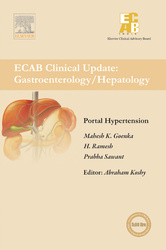「重要なお知らせ:日本語書籍をご購入いただき、eLibraryをご利用の皆さまへ」
エルゼビアは、より快適にサービスをご利用いただくため、システムの重要なアップデートを実施いたします。
現在、新サイト、eBooks+への移行が進められています。
新規ユーザー登録および書籍の登録はElsevier eLibraryでは停止しております。
12月15日以降に
こちらよりご利用・ご登録ください。
Book Description
Defined as a portal pressure of 12 mmHg or more, portal hypertension results from a combination of increased intrahepatic vascular resistance and increased blood flow through the portal venous system. Esophagogastric varices is the most important complication of severe portal hypertension because of the high risk of bleeding and mortality associated with them. Ascites is another important complication which may at times be refractory to treatment and may also get complicated by spontaneous bacterial peritonitis and hepatorenal syndrome. Portal hypertension is a predictable and preventable condition but has no definite cure. An aggressive approach to prevention and treatment of portal hypertension is therefore warranted.
Treatment of portal hypertension is evolving rapidly and many changes in the therapeutic protocols have been incorporated in recent times. Endoscopic treatment of the bleeding varices and prophylactic role of beta-blockers to prevent rebleeding are well-established therapeutic options. The measurement of the hepatic venous pressure gradient may identify a suboptimal response to beta-blockers in patients at risk of bleeding from varices. However, the costeffectiveness of routine hepatic venous pressure gradient measurements to guide primary prophylaxis has not been examined. Besides these, there is a definite role of somatostatin analogs and shunt surgeries in the treatment of portal hypertension and its complications.
This book is designed to update the reader on all such issues related to diagnosis, treatment and complications of portal hypertension along with supportive typical case scenarios. Thus it provides an excellent opportunity to widen one’s perspective in this area.


 (0 rating)
(0 rating) 





